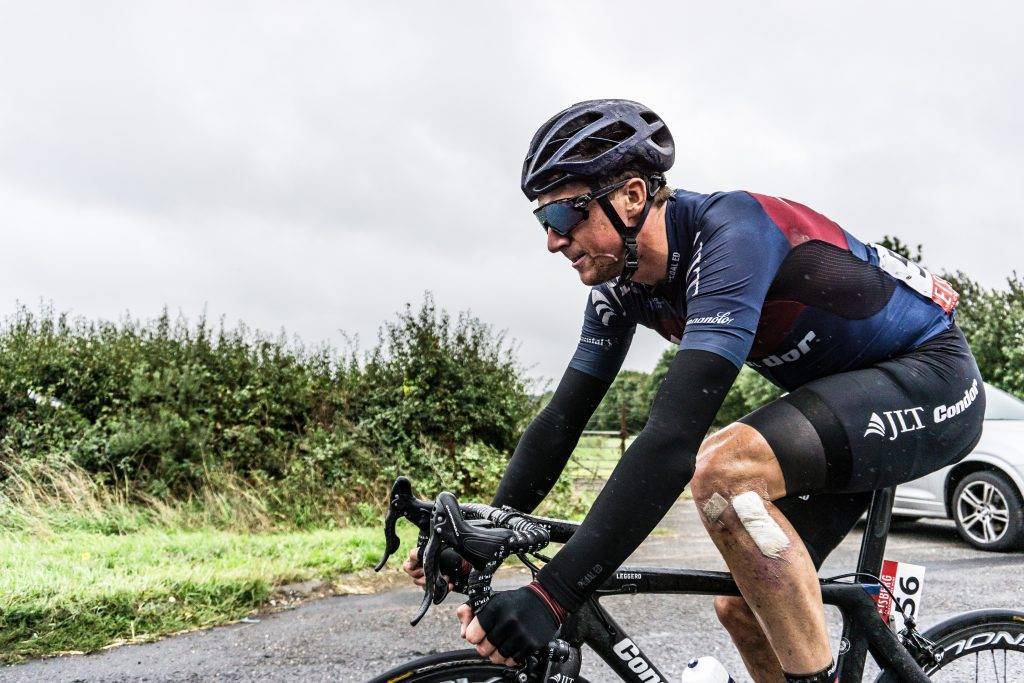Cycling Knee Pain: What It Is and How to Treat It

Your knees are large, complex joints in the body. For the average person, the knees have an important role in daily movements and functioning. For a cyclist, healthy knees are crucial!
As a cyclist, your knees and legs bear the brunt of the pressure and do the work to keep you moving. The constant repeated movement of your knee makes it susceptible to wear and tear and injury. Knee pain due to overuse is the second most common injury in cyclists. Back pain is first.
Read on to learn more about cycling knee pain including the symptoms, causes, types, and treatments.
Understanding the Knee Joint
Your knee is a complex assembly of tendons, ligaments, bone, and cartilage. The knee joint is where the femur (thigh bone) and the tibia (shin bone) meet. The fibula and patella (knee cap) are other bones in the joint.
Additionally, tendons connect the muscle to the bone to help move the joint and ligaments connect the bones for added stability. Cartilage helps cushion the joint and acts as a shock absorber between the bones.
Cycling Knee Pain
Each piece of the knee joint works together to keep the knees functioning at their best and to keep you moving. An injury to one piece disrupts the delicate balance and causes problems with pain and mobility.
Symptoms
Pain from cycling can occur anywhere in your knee – along the front, back, or sides. The underlying problem and cause determine where you feel the pain. Patients who experience knee pain may also have the following symptoms of knee pain:
- Redness
- Warmth around the knee
- Swelling
- Weakness of the knee
- A feeling of instability
- Inability to straighten the knee
- Problems bearing weight
- Popping or crunching sounds when moving your knee
Causes
The repetitive motion of cycling often leads to injuries due to overuse of the knee joint. Cycling parameters such as cadence and power output combined with the settings of the bicycle impact how the knee is used and muscle activity around the knee. The slightest change can alter the stress on the knee.
The most common causes of knee pain from bicycling include:
- Incorrect cleat alignment
- Wrong saddle positioning or height
- Incorrect cadence or rate of your pedal stroke
- Poor flexibility or strength of the core, pelvis, or lower limbs
Common Types of Cycling Knee Pain
Cycling knee pain is often localized to certain regions of the knee.
- Anterior knee pain – Pain in the front of the knee is the result of pressure on the patella and surrounding tissues. This can be caused by saddle height that is too low or too far forward, tight hip or knee flexors, slow cadence, or incorrect cleat alignment.
- Posterior knee pain – Pain in the back of your knee is caused by increased pressure in the area. This may result from a saddle that is too high; tight hamstrings, calves, or gluteal muscles; or keeping the cleats too far forward on the pedals.
- Lateral or medial knee pain – This results when pressure is incorrectly applied across the lateral or medial structures of the knee. Incorrect cleat positioning, tight muscles, and poor core strength can lead to pain in the lateral or medial regions of the knee.
How to Treat Your Cycling Knee Pain
Your knees provide support to the rest of your body.
It is important to take proper care of them to keep them strong and pain-free. Biking is actually a great way to keep your knees healthy as you age. However, proper form on your bicycle is crucial to prevent problems.
Strengthening Exercises
Additionally, strengthening and stretching exercises can keep your knees and the muscles around the joints functioning at their best. Exercise keeps your knees strong from the start and can strengthen them following an injury. Consider the following strengthening exercises to relieve your knee pain:
- Leg raises or leg extensions
- Hamstring curls
- Wall squats
- Calf raises
- Step-ups
- Leg presses
Always consult a physician before starting a new exercise program.
Knee Pain Treatment
If you experience pain in the knee, you may first try to treat minor pain or injuries at home with rest, ice, heat, compression, and elevation.
For pain that persists or more serious cycling knee injuries, consult a specialist in sports medicine. Your physician will perform a comprehensive physical examination of your knee. He may also request diagnostic testing such as an x-ray, CT scan, MRI, or ultrasound to determine the exact problem.
Treatment options for knee pain relief range from conservative to invasive including medications, therapies, injections, or surgeries. At Advanced Sports & Spine, knee treatments may include:
- Knee joint injections
- Viscosupplement injections
- Genicular neurotomy, nerve blocks, or nerve ablation
- Bursa injections
- Regenerative medicine such as stem cell therapy or PRP therapy
Contact Advanced Sports & Spine for Cycling Knee Pain Treatment
At Advanced Sports & Spine, we utilize a holistic, integrative approach to pain management including the use of non-invasive, non-opioid treatments. Our goal is to improve your mobility and get you back on your feet (or bike) as quickly as possible.
For more information on treatments for cycling knee pain in Charlotte, schedule an appointment with Dr. Ahmad today!
